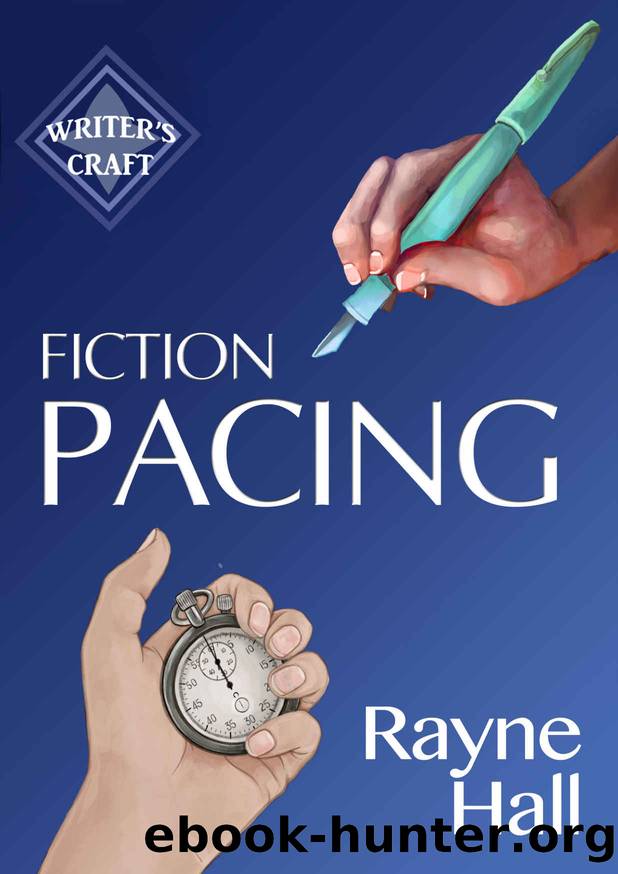Fiction Pacing: Professional Techniques for Slow and Fast Pace Effects (Writer's Craft Book 33) by Rayne Hall

Author:Rayne Hall [Hall, Rayne]
Language: eng
Format: epub
Published: 2019-12-04T23:00:00+00:00
Chapter 14
ACTIVE AND PASSIVE VOICE
Passive Voice sentence constructions have an extremely pace-slowing effect.
FAST PACE
Be strict: eliminate all Passive Voice from your writing in sections where you want the pace to be fast.
Examples:
Instead of
I was bitten by the dog.
Write:
The dog bit me.
Instead of
The ship was captured by the pirates.
Write:
The pirates captured the ship.
Instead of
Her hiding place was found by the hunters.
Write:
The hunters found her hiding place.
SLOW PACE
In a slow-paced scene, Passive Voice can sometimes be appropriate â but use it very sparingly, because its effects can make the writing clunky, pompous and dull.
Active Voice is almost always better, even in slow-paced sections.
PROFESSIONAL TIP
Occasionally, Passive Voice can produce a desired special effect. For example, you may want to use it in a slow-paced dialogue section when a pompous bureaucrat speaks. (âConcerns were raised by residents about the condition of the building.â) A couple of Passive Voice sentences will characterise the speaker as stiff and stilted, a stickler for bureaucracy who shies back from action.
But use this trick sparingly.
WHAT NOT TO DO
Donât insert Passive Voice constructions for the sake of slowing pace, or you risk boring the reader.
ASSIGNMENT
Check your fast-paced section: Does it contain any Passive Voice constructions? If yes, change them to Active Voice.
Download
This site does not store any files on its server. We only index and link to content provided by other sites. Please contact the content providers to delete copyright contents if any and email us, we'll remove relevant links or contents immediately.
Periodization Training for Sports by Tudor Bompa(7988)
The Body: A Guide for Occupants by Bill Bryson(4688)
The MacArthur Bible Commentary by John MacArthur(4666)
The Sports Rules Book by Human Kinetics(4132)
What It Really Takes to Get Into Ivy League and Other Highly Selective Colleges by Hughes Chuck(3579)
Marijuana Grower's Handbook by Ed Rosenthal(3546)
The Sprouting Book by Ann Wigmore(3456)
The Martian by Andy Weir(3218)
Salt, Fat, Acid, Heat: Mastering the Elements of Good Cooking by Nosrat Samin(3032)
The Bread Bible by Rose Levy Beranbaum(2927)
Sapiens and Homo Deus by Yuval Noah Harari(2892)
Classic by Mary Berry(2872)
Harry Potter 4 - Harry Potter and The Goblet of Fire by J.K.Rowling(2859)
The Marketing Plan Handbook: Develop Big-Picture Marketing Plans for Pennies on the Dollar by Robert W. Bly(2843)
Martha Stewart's Baking Handbook by Martha Stewart(2705)
The Plant Paradox by Dr. Steven R. Gundry M.D(2465)
Screenplay: The Foundations of Screenwriting by Syd Field(2462)
50 Economics Classics by Tom Butler-Bowdon(2439)
The Cambridge Grammar Of The English Language by Rodney Huddleston Geoffrey K. Pullum(2334)
